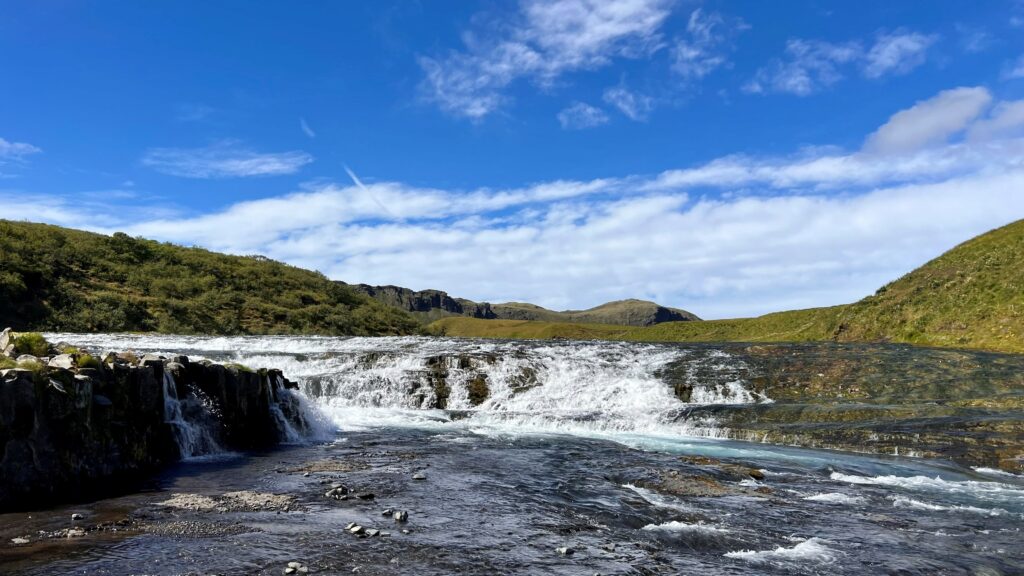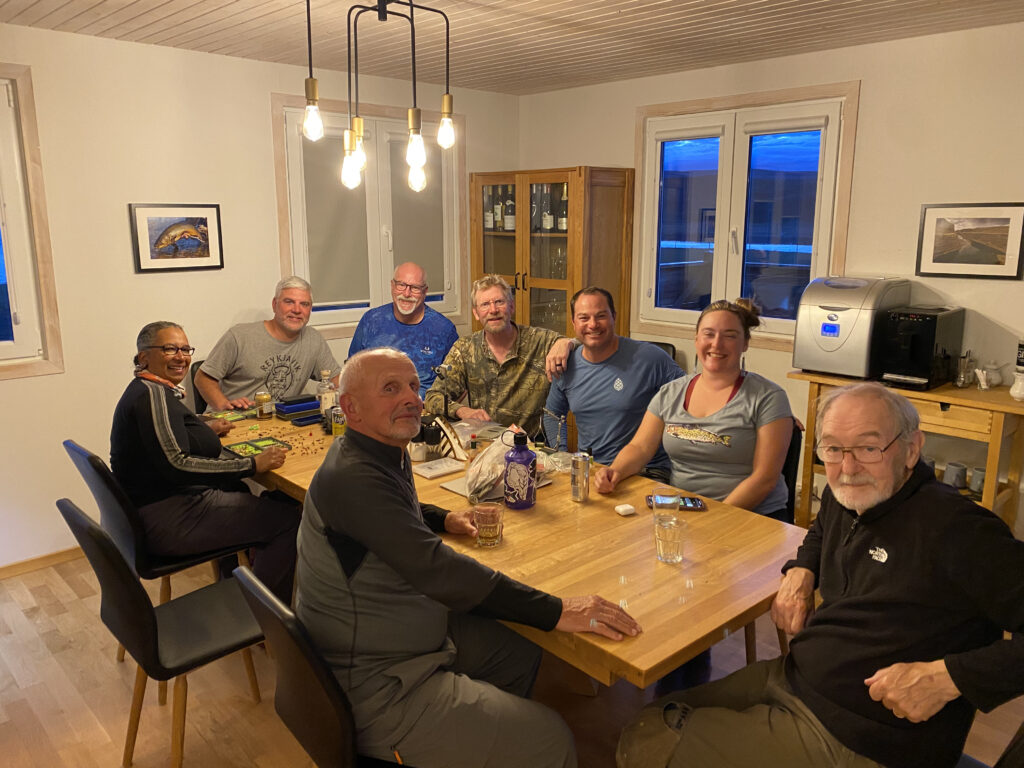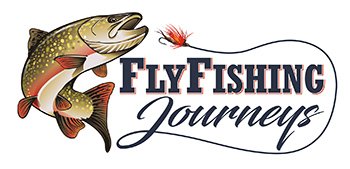Earlier this year, I went on a fly fishing adventure to Iceland joining a group of 8 total anglers, eager to hit the water and catch ice age brown trout, sea run char, resident browns, and Atlantic salmon. With six days of scheduled fishing, one hotel, three lodges ranging from 5 star to family style, two to one angler to guide ratio, and countless fishing destinations, what more could an angler ask for?
This trip was operated by Fish Partner, in partnership with Fly Fishing Journeys and Trout and Feather. Fish Partner has decades of firsthand experience fishing the waters around the country of Iceland, in about every condition imaginable. From what we heard, Iceland has one of the most reliable trout fisheries in the world as it always produces fantastic resident and sea-run brown trout, arctic char and Atlantic Salmon fishing. Unlike in the states, where an angler buys a state fishing license and can fish public lands, in Iceland, you need to either purchase a license to fish a beat, or fish with a guide who leases the river, lake, watershed. There are no public fishing lands in Iceland. So, it is important to do your research and find a guide you can trust throughout.
On a destination trip such as this, there can be a lot of expectations about the fishing, amount or size of fish, weather, scenery, etc from the anglers traveling to Iceland. All I can say is set your expectations aside, throw your phone on airplane mode, and let the guide teach you the best techniques to catch these elusive fish.

Reykjavik
The majority of our group arrived on a red eye flight, which allowed us a day to relax and explore the big city of Reykjavik before diving straight into fishing. I recommend traveling in this fashion, so you arrive ready to go for your first full day of fishing and don’t have to worry about missed connections, luggage, etc. A few of the group members went to the spa, experiencing the famous Iceland geothermal heated pools, others went on walking tours around the city, horseback riding, and simply explored the city while picking up nick-nacks for loved ones back home. We stayed in the heart of the city, overlooking the famous 74.5-meter tall Hallgrímskirkja church, which made exploring landmarks including the statue of Leif Eiriksson, rainbow road, Solfarid Sculpture, Cemetery Holavallagardur, local eateries, and much more extremely easy.
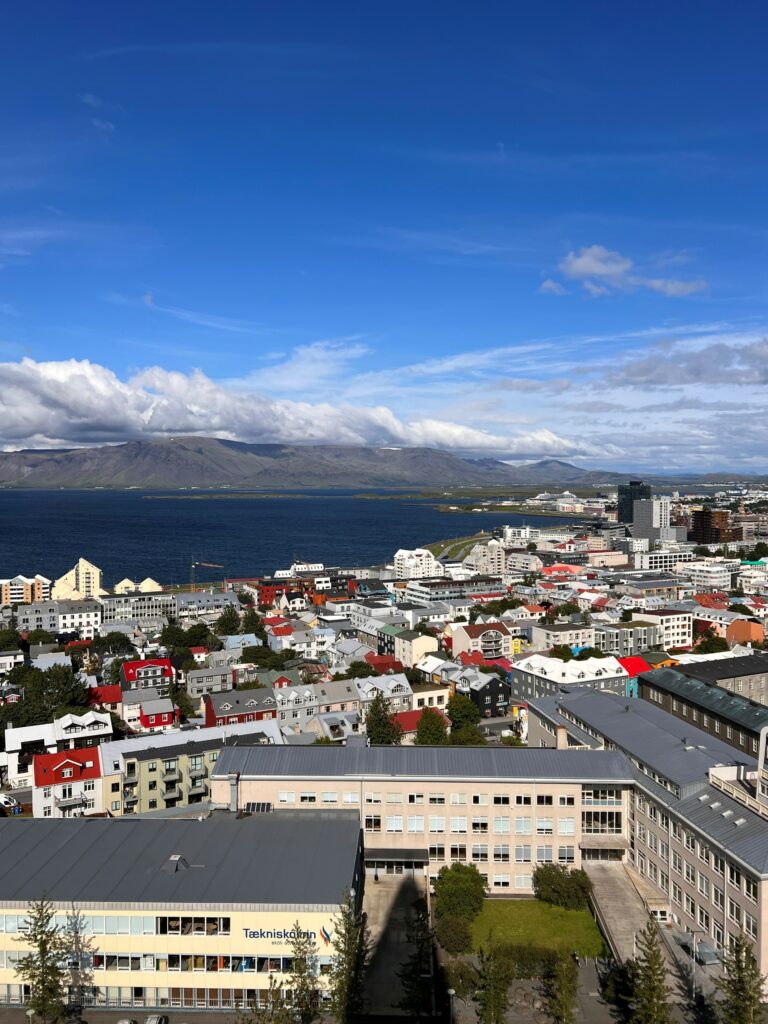
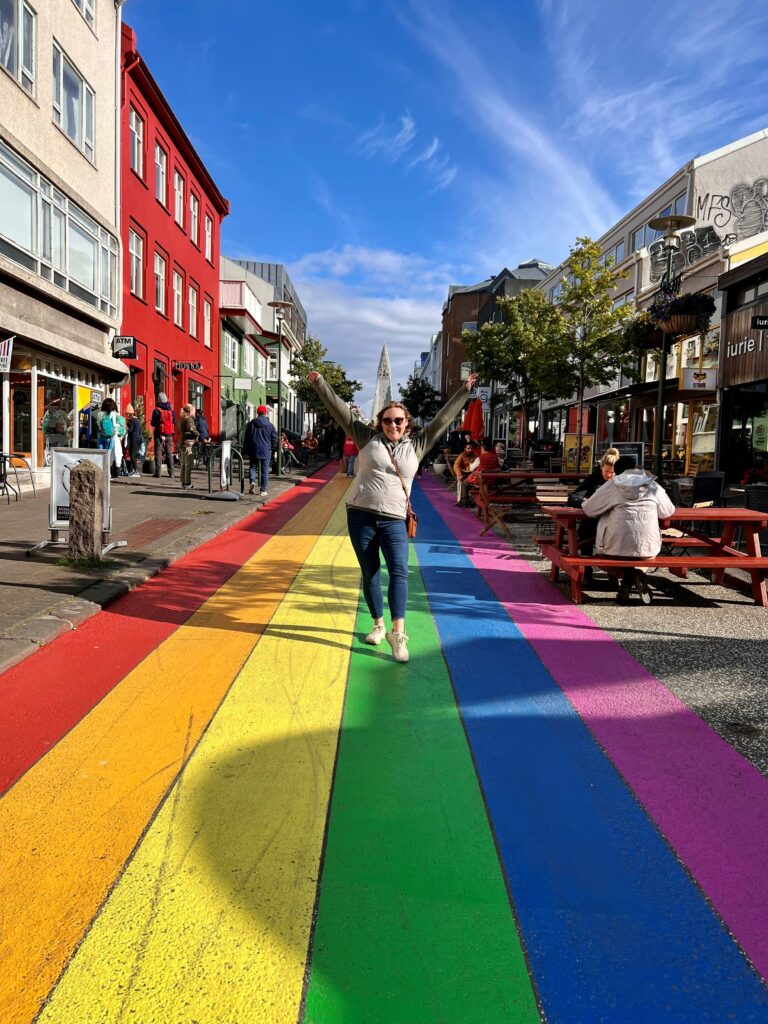
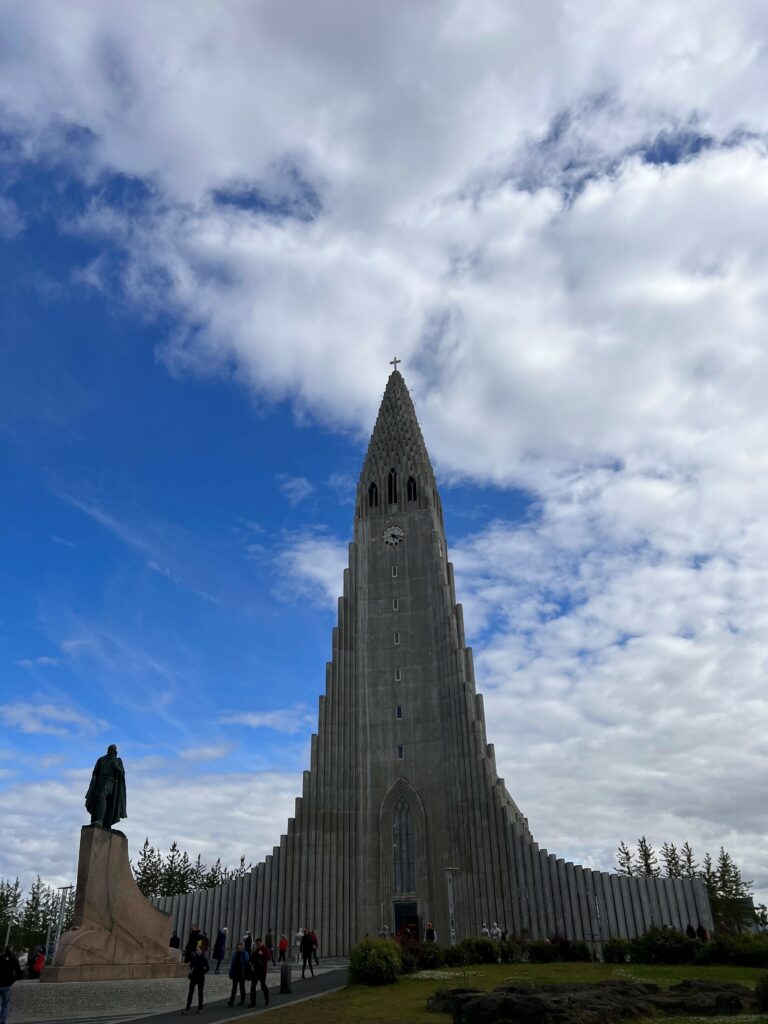
Fly Fishing Lake Thingvallavatn and Lake Villingavatn
Lake Thingvallavatn (Big Lake) is 32 square miles in size, and lies along the North Atlantic Ridge, sitting where the North American and Eurasian tectonic plates separate from each other. The lake is 12,000 years old and formed by land subsidence and lava dams. Lake Thingvallavatn lies partially within the Þingvellir National Park, and is made up of canyons that cut the lake bottom in many places reaching its deepest at 377 ft with average depth of 111 ft. The lake water however, is gin clear, making it very easy to spot fish, and three out of the five species of freshwater fish found in Iceland live in Thingvallavatn; brown trout, arctic char (four varieties) and the three spine stickleback.
Lake Thingvallavatn tests an angler’s agility and stamina. In some beats, you are wading out on what can be slippery rocks, casting to blue patches of water, which are breaks and crevasses in the lake floor. Like a lake highway, the browns and char cruise these cracks searching for their next meal. In other beats, you are bombing casts as far as you can, and either watching your indicator as it bops the bottom in the current, or you strip your fly in as fast as humanly possible.
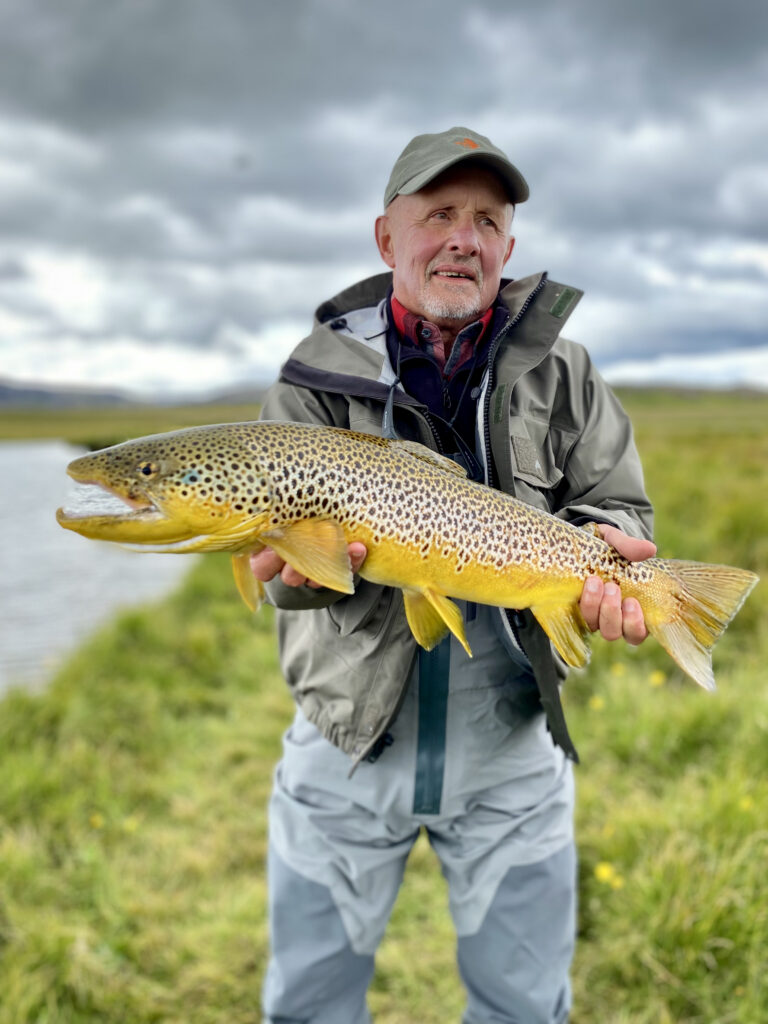

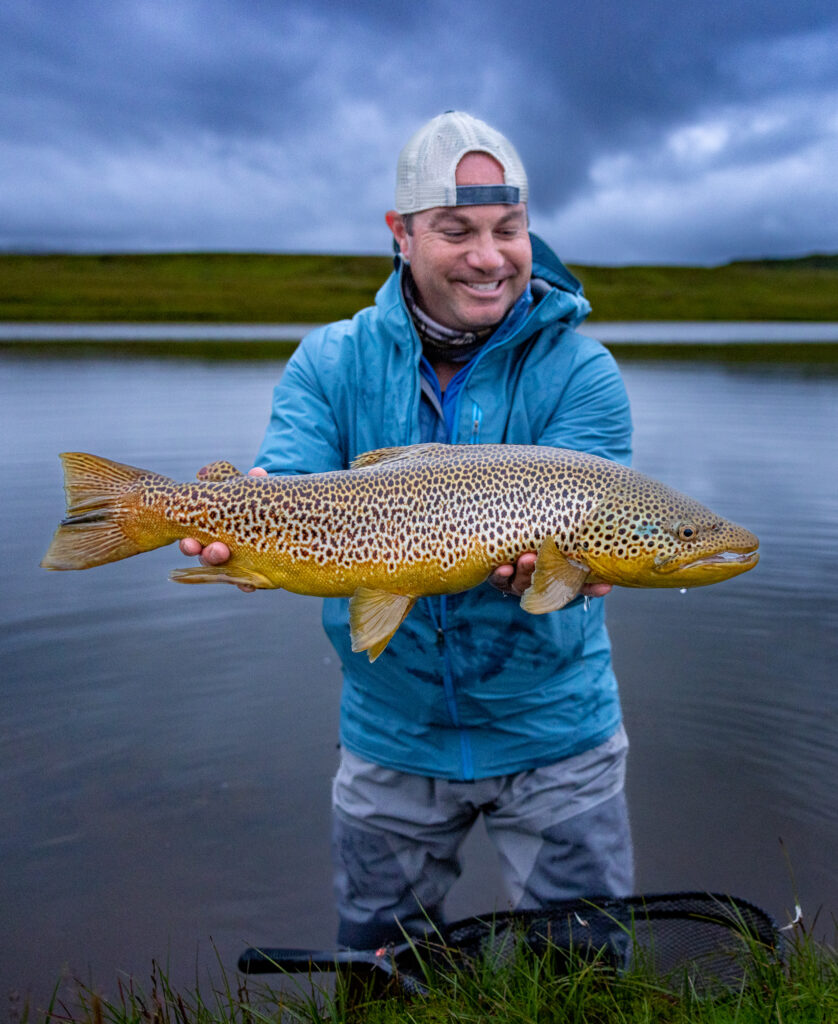
The browns in Thingvallavatn have shining silver skin in the spring and their average size is 7-9 lbs, and during prime time in spring many 20 pounders are landed. The all-time record brownie caught on a rod in Thingvallavatn was 36 pounds (can you even imagine?!). Our group fished Thingvallavatn in August, which was nowhere near spring, but we did catch some shining bright brownies!
Lake Thingvallavatn also supports four varieties of the Arctic char, making it one of the most unique places in the world! The Arctic char in Thingvallavatn is a clear example of how species adapt to their surroundings, as the four varieties have evolved from one species in only 10,000 years.
The Arctic char (Bleikja in Icelandic), have adapted themselves to two main lake habitats; the main body of water and the bottom of the lake. In the main body of the lake, the food source of the Arctic char is constantly on the move and the fish themselves have little shelter from predators. As fish eaters, the piscivorous char (sílableikja in Icelandic) have a long lower jaw and can grow up to 16 inches in length. While the plant-eating planktivorous char (murta in Icelandic) is a lot smaller, usually only about 8 inches in length. The lake bottom is the main habitat of the large snail eating char and the dwarf-char. There is enough food there and also plenty of places to hide from predators. The snail-eating char can be up to 20 inches in length, while the dwarf-char stands up to its name and is usually only 4-5 inches.

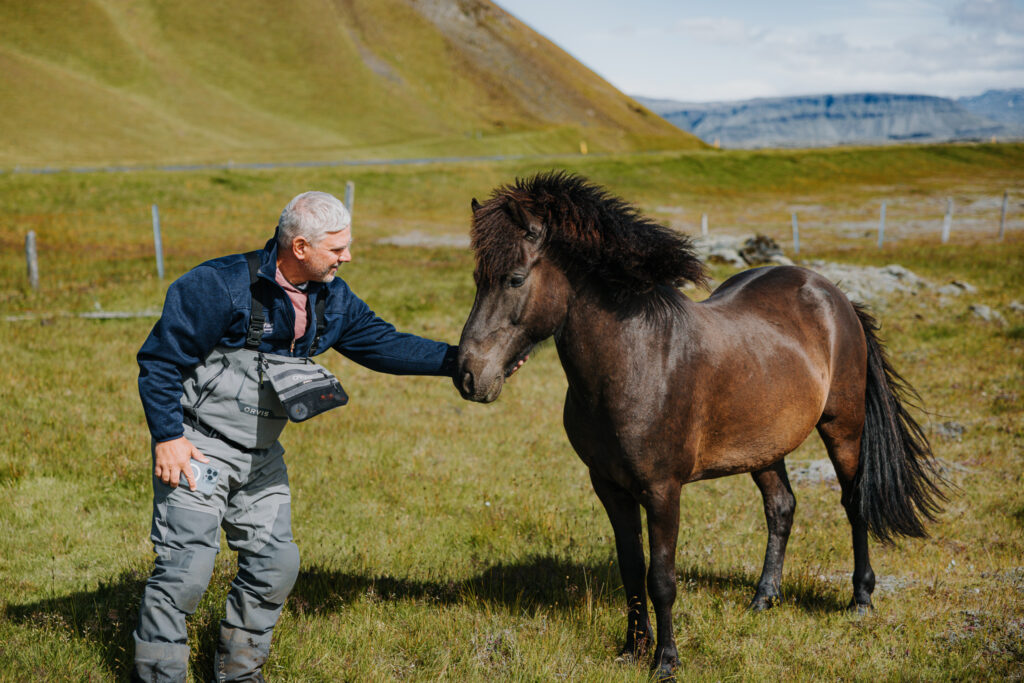
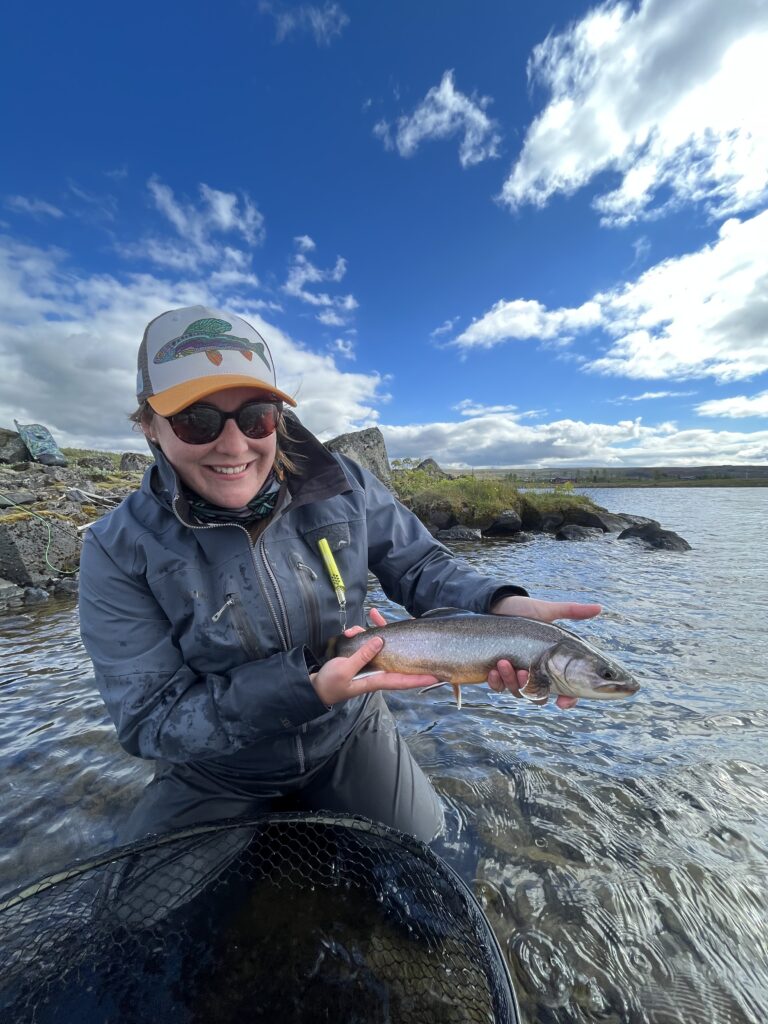
Lake Villingavatn (Little Lake), despite being small, is the home to huge, buttery bright brown trout. Lake Villingavatn has been nicknamed “Little Lake” for a reason, because it is barely a blip on a map compared to Lake Thingvallavatn. Anglers can walk around the entirety of the lake, sight fishing to feeding browns. Lake Villingavatn tests an angler’s wit, because you can see massive browns swim to the shallows and ignore your fly before promptly swimming back to the dark depths of this little lake.
At times, you get one shot at sight fishing and placing your flies in the right place in front of the brown before it disappears. The good news is, they will be back. So, change up your fly, change up your stance, and you’ll get another shot. For the most part, you are fishing short casts, anywhere from 1-15 feet from shore, casting either one or two fly rigs. A good rule of thumb is to begin with the smallest flies in your box and work up from there. For example, you might first try throwing a size twenty nymph under size 16 dry flies, then switch the dry for another, slightly larger nymph, and indicator. We slowly bumped up the size of the nymphs and changed the colors and styles, until we finally started throwing small streamers, and then started it all over again. One technique that worked very well this year was a double dry set up; one larger foam ant (or something similar), with a smaller dry, like a black caddis, 12-18 inches behind.
As far as gear in Lake Thingvallavatn and Villingavatn goes, 6-8 weight fly rods are ideal, because you will be throwing an array of flies from streamers, to dry flies and two-nymph rigs. Some Icelandic favorites in terms of flies include the Krókurinn, Mobuto, Hare’s Ear in size 10-12, Black Gnat, Elk Hair Caddis, Royal Coachman, and foam ants in size 14-20, and streamers ranging from wooly buggers to the Black Ghost Zonker, and the Nobbler Streamer in sizes 4-8.
The Highlands, River Kaldakvísl and River Tungnaà
In my opinion, the heart of Iceland can be found in the Highlands. The scenery in the Highlands is truly epic and unlike any other. The Highlands are made up of untouched vast wilderness, consisting of mountains, deserts, lava fields, canyons, waterfalls, rivers, and lakes. This area truly shows off what Iceland is known for: fire and ice. The lava fields are vast, while the water flows through rocks that have clearly been formed by the movement of ice and water over the decades. The waters of the Highlands are ripe with big, beautiful, Arctic Char and brown trout, peacefully cruising the crisp clean streams since the Ice age.
In the Highlands, there were over 30 different beats on River Kaldakvísl and River Tungnaà that the guides methodically planned our days around. Your day could consist of sight fishing to char with a two-nymph rig under an indicator or casting big meaty streamers into a pool at the base of a cascading waterfall.
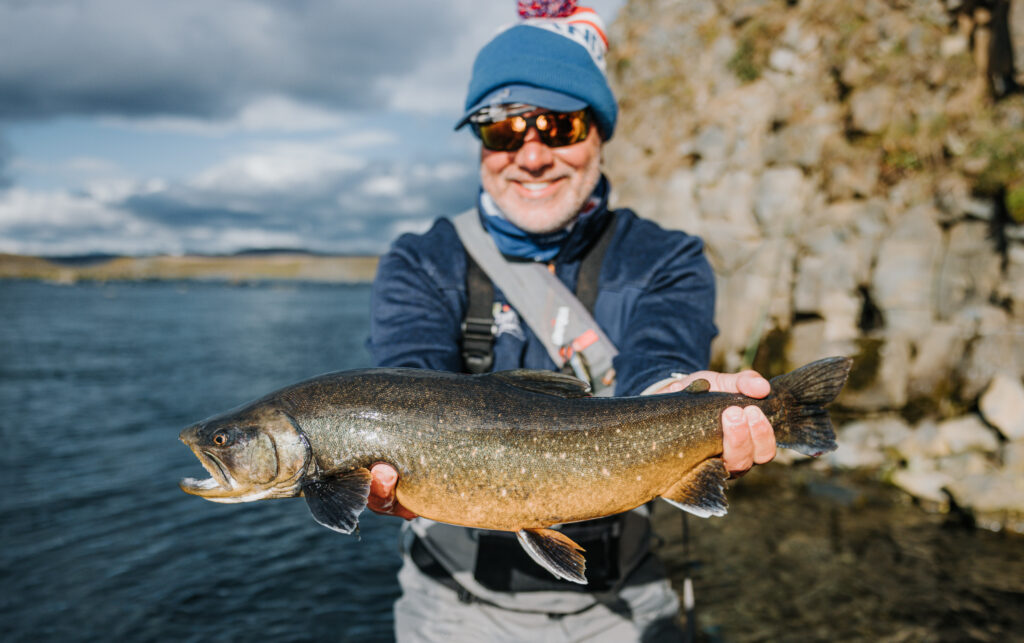


Fished by only a select few, Kaldakvísl river is only exclusively available to customers of Fish Partner. The river can be described by diverse and contrasting characteristics, with a fishable beat of 16 miles. This is where you can find the beautiful iconic waterfalls, great canyons, fast water, slow water, rocks, sand and so much more. The river is full of arctic char, their size averaging at 3-4 lbs, although char weighing up to 7 lbs can be found there, as can big brown trout.
The upper part of the river flows through inaccessible deep canyons, where the char and trout can grow to their full size. It is said that it is hard not to fall in love with Kaldakvísl once you’ve had the chance to get to know her.
Tungnaà River is a former glacial river that had been running for thousands of years until 2013 when the government constructed a hydro dam for energy production. The construction of the hydro dam allowed the river to run through the center of an old glacial riverbed, creating an absolutely beautiful scene.
The Tungaà River is truly a trout fishing paradise, diverse and fascinating gin clear spring water flowing into beautiful micro canyons. This river runs through traditional fast and slow running pools, filled with brown trout and big arctic char. This smallish, south Iceland Highland trout stream is probably one of the best kept trout secrets in global angling. It is a technical river where stealth, among other attributes, is needed. The quarry is native brown trout and monster chars that average 3 pounds, with the monsters ranging up to 12 pounds.



Typical gear for the Kaldakvísl River and Tungaà River is 4-6 weight lines and 4-8 lbs. leaders, with floating lines. Up-stream nymphing can be a productive method of fishing but in the right conditions browns and char will come up and gulp a dry fly and hammer streamers. Favorite flies in the area ranged from the traditional Krókurinn, Alma Rún to a tungsten bead head jig, Copper John, Elk Hair Caddis, Black Gnat, Black Ghost Zonker, and variations, and Fish Skull streamers.
Tungufljótt, Fossálar-Vatnamót-Battle Hill Lodge
Our group was lucky enough to be the first group to stay at Fish Partner’s newest fishing lodge, “Battle Hill Lodge.” Battle Hill Lodge is a newly renovated house on a historic farm. Directly out the front door is the Bruna Hraun lava field, which is part of a national park that is one of three UNESCO heritage sites in Iceland. And, if you look further, you can see the largest glacier in Europe, “Vatnajökull,” with a large cliff called “Lómagnúpur” between the two. The lodge was named Battle Hill because in the 10th century, a famed Viking Chieftain, Hróars Tungugoði, was slain on the hill on the land, giving it the name Orustuhóll, or “Battle Hill” in Icelandic.


Iceland offers some of the best Sea-Trout (sea-run brown trout) and Atlantic Salmon fishing in the world. The historic, picturesque locations will give anglers an incomparable experience of a lifetime. Renowned for its striking beauty and unique landscape, much of this region was carved out by one of the deadliest super-eruptions in history. The river systems around Battle Hill offer anglers a wide variety of pools and landscapes to fish from. The rivers are regarded as some of the best in Iceland and consist of: Fossálar-Vatnamót, Jónskvísl and Sýrlækur, Tungufljótt, Grenilæk (Fitjárflóð), and Skaftá – Ásgarður.
The Jónskvísl and Sýrlækur Rivers are best known for their large returns of sea-trout, resident brown trout, and arctic char populations that can weigh up to 6 pounds. The Tungufljótt River is nestled amongst some of the most spectacular sites in Iceland, surrounded by fire and ice (glaciers and volcanoes). It is regarded as one of the best rivers for Sea-Trout in Iceland, both because of its beauty and because of its high numbers of sea-trout in the river. The sea-trout in Tungufljótt average 5-10 lbs, and can be caught as large as 20lbs. The prime time to fish the Tungufljótt is April-May, and August-October because the fish are migrating to and from the ocean. During June, Tungufljótt boasts a healthy resident population of browns and arctic char, but by the middle of July Atlantic Salmon arrive in the river and will remain into the fall.
The Grenilæk River Grenlækur is a spring fed river, originating from the glacial river Skaftá which flows and is filtered through the Eldhraun lava field before it emerges in Grenlæk. Like many other rivers on the south coast of Iceland, the main fishing here is for Sea-Run Brown trout, although resident browns, arctic char and Atlantic Salmon can also be found lurking the clear waters of Grenlækur.
Because the area around Battle Hill is so diverse, you can throw a 6-8 single hand, spey or switch rod. For smaller waters, a single handed 6-8 weight rod while nymphing or using dries is perfect. Reels should provide a smooth and good drag system, and have a minimum of 100 yards of 20lbs backing. The majority of fishing is done with a weight-forward floating line, and it is always advisable to have a spare spool or reel with a sink tip or sinking line just in-case. Carrying a few poly leaders with you can be a great option, too.
From nymphing and using dry flies in small waters, to throwing streamers and swinging or stripping your fly through deep runs, the area and flies you use are very diverse. Many of the groups’ fish were landed on size 16 rubber leg nymphs under indicators, while others were caught on large streamers like the Black Ghost and the standard Wooly Bugger. Other flies to be sure to carry along are similar to those listed above.
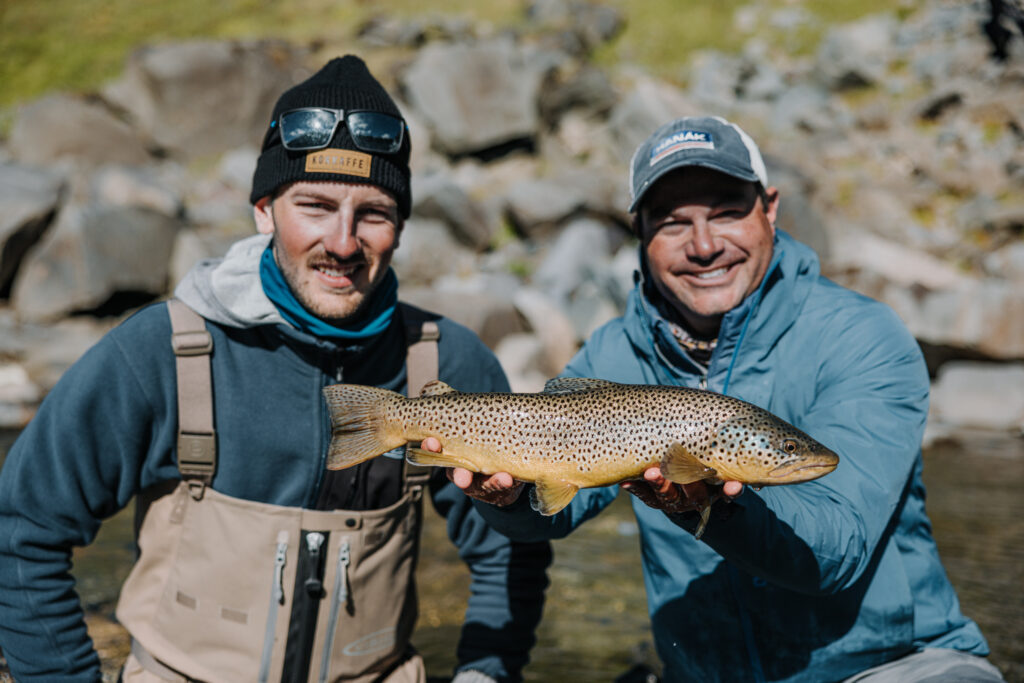

Overall, Iceland is an amazing country. It is full of spirited people, great food, and amazing fishing opportunities. If you are a fly angler, and you love to travel and see wild places, Iceland is absolutely the place for you! Upon returning from my trip to Iceland, friends were astonished that I didn’t visit places like the famous Blue Lagoon or the Strokkur Geysir, but for me, getting to experience the country through fly fishing was the ultimate way to travel. Who else can say they’ve climbed down and fished in the pools below a cascading waterfall to brown trout and arctic char?! Because, I can…
Photos courtesy of Tim Cammisa (Trout and Feather), Rob Giannino (FFJ) & Kayla Fleetwood (FFJ)



